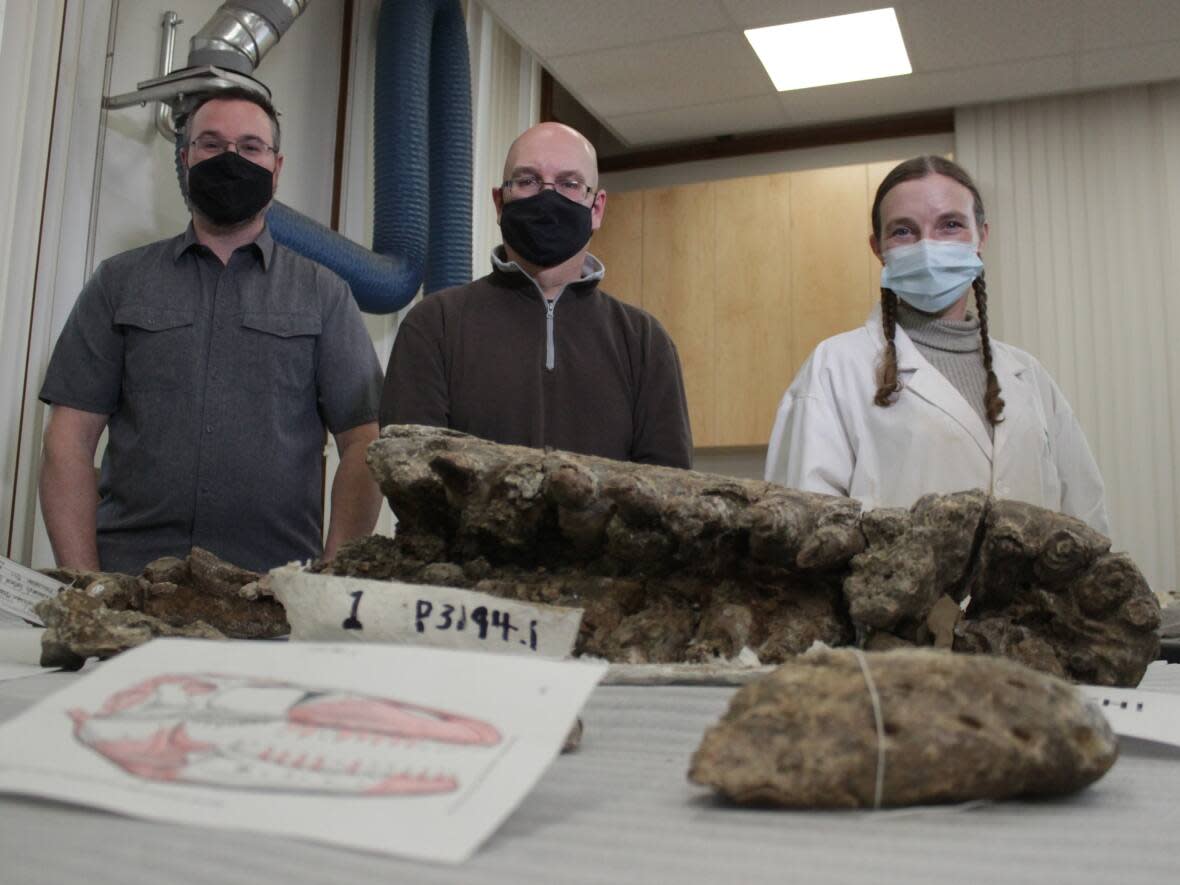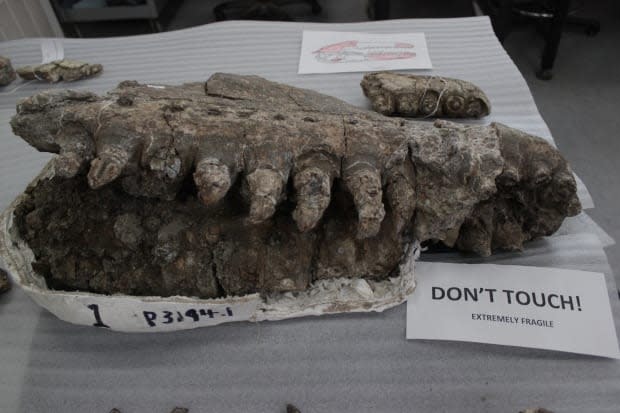Sask. paleontologists uncover 'T. rex of the sea' fossil in Grasslands National Park

Researchers at Regina's Royal Saskatchewan Museum have unearthed a new fossil almost as big as the province's beloved Tyrannosaurus rex, Scotty.
The prognathodon — which paleontologists call the "T. rex of the sea" — was a large, snake-like marine reptile in the mosasaur family. The fossil now unearthed by the RSM was originally discovered in 2012, in what is now Grasslands National Park, located in southwest Saskatchewan.
Wes Long, a curatorial assistant of paleontology at the museum, started the process of uncovering the creature one November day when he was taken to the site via ATV by the original land owner.
"All the bones were frozen to the ground and there was snow on the ground, too, and you could see bones sticking out of the snow," Long remembered. "It was a difficult first site check to surface-pick anything, but we managed."
At the time, he said they were able to dig up the tip of the snout and part of the lower jaw, along with a few other isolated bones.

Long returned the following year to do a more concentrated surface pick. It was then he found pieces of the creature's neck vertebrae, rib material and other miscellaneous odds and ends.
"I immediately compared it to the tylosaurus, which is a large marine reptile as well — a 32-foot marine reptile — but the material from this specimen dwarfed that specimen," he said. "It's much more robust."
No further digging was done at the site until this past September, when Emily Bamforth, another curatorial assistant of palaeontology at the museum, returned after another dig was delayed. She's glad she did.
"We honestly went out there not knowing what we were going to find, but within 20 minutes of getting to the site and starting to dig, we found the front of the snout," she said. "That was an indication that there was something big here."
Bamforth said they faced several challenges since it was late in the excavation season, including a deadline of two days to get all they could out and having to park five kilometres away from the nearest road.
"We hiked cross-country, gathering in the darkness — and it was getting cold — relying on GPS to tell us where our vehicles were," she recalled with a laugh. "It was an adventure."

At the moment, Bamforth said they have the front and back ends of the creature's lower jaw, along with parts of the skull and roughly half of its neck.
Long estimates the prognathodon was about 11 metres in length — slightly smaller than Scotty the T. rex, which is about 13 metres. However, it's older than Scotty, he noted.
With more specimens in the ground, Long and Bamforth said they hope to return to the site next year for another dig.


